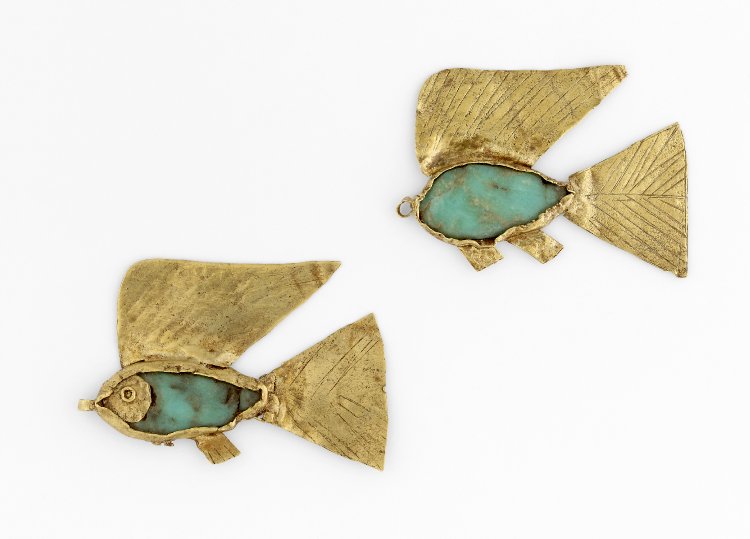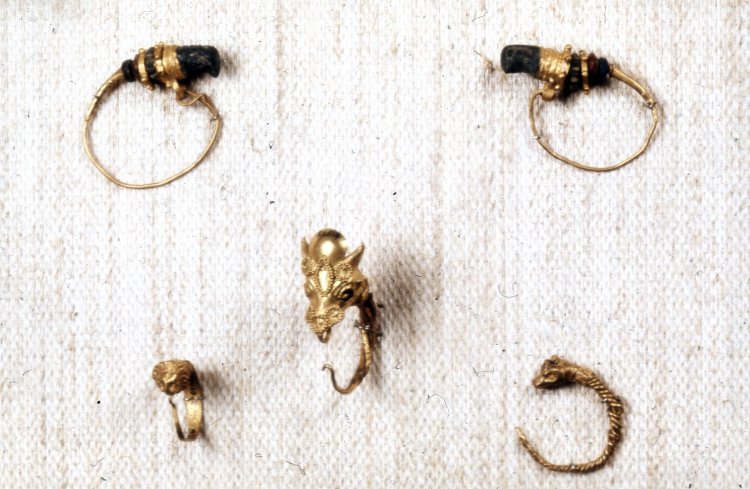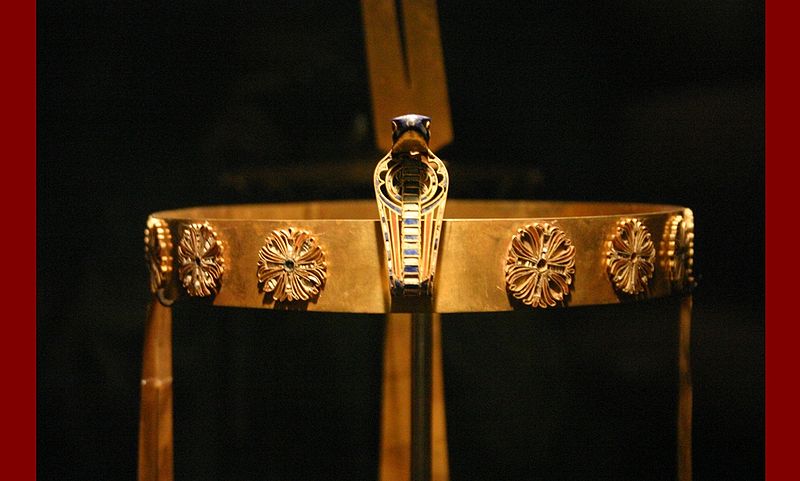“In Egypt, the dust on the highroads is pure gold.”
New Gild Jewelers owners Jen Bellefleur and Kelsey Lee-Karol recently had the pleasure of going to visit the MIA special exhibit “Egypt’s Sunken Cities,” and among the displays of colossal statues, temple goods, and hieroglyphic inscriptions, spotted some hidden gems of Greco-Roman and Egyptian custom jewelry. This got us thinking about ancient jewelry trends.
So what kinds of jewelry did the ancient Egyptians wear? Some of the best-known forms included broad collars, necklaces, large pectoral pendants, headdresses (including diadems, circlets, and crowns), wig and hair ornaments (such as gold tubes wrapped around braids), earrings, rings, bangles, hinged cuffs, arm bands, anklets and bracelets. Girdles of strung beads were often worn around the waist, and some portraits even show beaded nets fully covering a sheath dress of white linen.

Throughout all the ages of Egyptian civilization, certain materials were favored in jewelry. First among them was gold. To that they added color with faience, a fine minty-blue ceramic, and precious stones – most often turquoise, lapis lazuli, and carnelian, with the occasional green feldspar and amethyst. The Egyptians were already trading with distant lands to obtain these raw materials by 3500 BCE (that’s 1,000 years before the great pyramid at Giza was built). Egyptian beads were desirable exports as well; they have been found in Bronze Age sites as far away as Denmark and the British Isles.
Strings of beads as well as complex beaded structures were popular forms for jewelry, but the ancient Egyptians were also skilled goldsmiths and lapidary artists. Gold hammered into shapes beautifully replicated animal faces, claws and paws, or detailed floral motifs. Elaborate inlays painted pictures out of small pieces of colored stones cut precisely to size and set into individual cells of flattened gold wire. Another fashionable technique involved the soldering of tiny gold granules to a golden surface, much like modern millgrain, or the granules could be built up into geometric shapes.

Custom jewelry was not only a daily adornment in ancient Egypt; it also played a role in religious and political life, and even in death. Certain headdresses and ornaments designated position and status. For a pharaoh, who embodied the triumph of Egypt, even the inner soles of his sandals were inlayed with images of his enemies, so that he trampled them underfoot with every step. A ring might be worn to indicate personal devotion to a particular god or goddess, and jewelry was often left as an offering at the temples. In death, carved stone amulets were wrapped within the linen strips of a mummy to protect both body and soul.
One of the most magnificent collections of Egyptian jewelry ever discovered was the treasure trove buried with Princess Sithathoriunet (ca. 1900 BCE). A hidden niche containing multiple boxes of jewels and cosmetics had been overlooked by earlier grave robbers, and it was even initially missed by the lead excavator of her tomb. But once opened, the niche revealed ornate caskets of inlaid ivory full of necklaces, chokers, girdles, collars, armlets, amulets, more than a thousand golden wig beads, and a spectacular crown. The crown is kept in Cairo, but the majority of Sithathoriunet’s other treasures are in the permanent collection of the Metropolitan Museum of Art. To this day, some historians consider the dynasty during which she lived to be the pinnacle of Egyptian jewelry craftsmanship.
All this luxury really added up, especially if you consider the physical strength required to port such extravagant ornaments. A single headdress of gold and stones found at Qurna, designed to be worn over a wig, would have weighed 4 ½ pounds on its own. Broad collars, popular during all periods of Egyptian history for both women and men, were so heavy they usually required a large additional pendant at the back as a counterbalance.
We might not all have what it takes to wear the magnificent jewels of Sithathoriunet, but if you’re inspired by the Egyptian aesthetic, you might think about creating a piece of custom jewelry that replicates some of the minute details at which they excelled. (One of our favorite pieces from the exhibit was a teeny-tiny gold bird pendant.) Or create your own design that incorporates the primary colors of the ancients: sky-colored turquoise, the deep-sea blue of lapis, the sultry red of carnelian, and (of course) gold.
Looking for your own piece of custom jewelry? Let us help by visiting our custom jewelry studio, located in the Linden Hills neighborhood of Minneapolis, MN.


